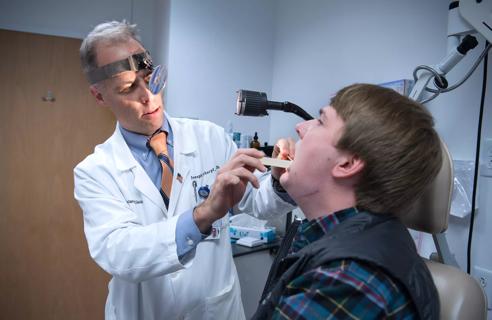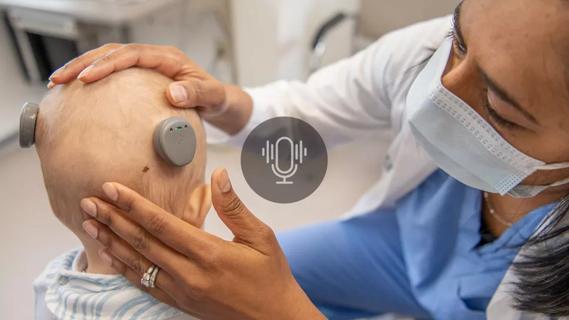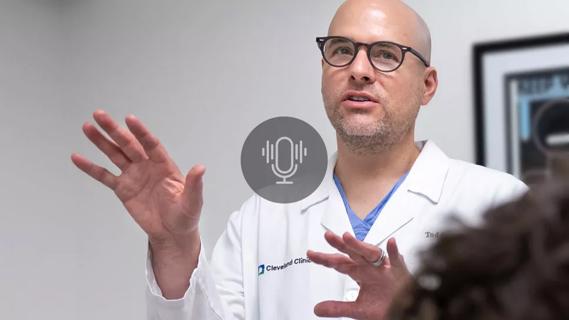CI not always offered to patients who would benefit

Sarah A. Sydlowski, AuD, PhD, and Erika Woodson, MD
Advertisement
Cleveland Clinic is a non-profit academic medical center. Advertising on our site helps support our mission. We do not endorse non-Cleveland Clinic products or services. Policy
Use it or lose it. The auditory system needs to be stimulated in order to maintain its optimal function.
Animal models have demonstrated that a lack of adequate auditory stimulation results in retrograde neural degeneration of peripheral neural structures, including the spiral ganglia and cochlear nucleus.1,2 In patients with hearing loss, there is a direct relationship between the duration of auditory deprivation and the severity of degeneration. Because successful cochlear implantation (CI) is dependent on the intact survival and functional integrity of these structures, leaving an ear understimulated (e.g., with no amplification) or delaying CI can lead to poor outcomes if and when CI is eventually performed.3
A progressive perspective is necessary in those circumstances where the progression of sensorineural hearing loss (SNHL) in the better-hearing ear is anticipated. For example, patients with unilateral Ménière disease are at significant risk for the development of disease in the contralateral side. If a patient loses aidable hearing in the initially affected ear, the window for a good CI outcome might close before the contralateral ear is affected.
Historically, CI evaluation has focused on speech recognition ability when a candidate is in the “best-aided” condition. However, the definition of “best-aided” remains unclear. Clinicians usually interpret the term to mean the bilateral use of appropriately programmed hearing aids. While these vague guidelines are generally adequate, they often result in an unfortunate circumstance for patients with asymmetric SNHL. Specifically, the better-hearing ear masks the struggle of the poorer-hearing ear, and candidates are disqualified for CI despite the challenges they face.
Advertisement
It is well documented that patients with even one poorly hearing ear experience difficulty understanding speech in background noise and in other complex listening environments due to the loss of several properties of binaural hearing (i.e., summation, squelch and head shadow).4 Research has suggested that patients with unilateral hearing loss, even when hearing is normal in the contralateral ear, demonstrate a clinically significant benefit from CI, particularly in challenging listening environments such as background noise.5,6
As another clinical example, a patient with autoimmune inner ear disease may experience rapidly progressive fibrosis or ossification. Waiting for both ears to become profoundly affected may cost a patient the opportunity to eventually receive sequential bilateral CIs and thus their best possible outcome.
In light of recent findings regarding the importance of ear-specific evaluation for CI candidacy, the Head & Neck Institute Hearing Implant Program evaluates candidates with the intention of optimizing hearing in any ear that demonstrates a limited benefit from amplification, even if the speech recognition ability of the better-hearing ear would have previously excluded consideration of CI. For patients who are at risk for progressive SNHL, providing a safety net against a sudden world of silence does immeasurable good for their peace of mind and ability to live a productive life.
Reports suggest that only about 5 percent of patients who could benefit from a CI have one.7 A variety of factors may contribute to this disturbing statistic:
Advertisement
Hearing health professionals who have questions regarding their patients’ eligibility for CI are invited to contact our Hearing Implant Program at 216.444.0354 or mailto:hipteam@ccf.org.
Dr. Sydlowski is Audiology Director and Dr. Woodson is Medical Director of the Hearing Implant Program.
Advertisement
Advertisement

A deep dive into the evolution of surgical sleep therapy

A commitment to sharing expertise has fostered a global exchange of ideas

How a new clinic is helping to streamline evaluations for patients

A multidisciplinary approach and individualized plan of care are imperative

Insight on larynx disorders and treatments

Novel procedures provide options for patients who can’t tolerate CPAP

Research on children with UHL explores the quality-of-life benefits and outcomes of cochlear implants

A look at how custom-fitted oral appliances work and when they’re a good fit for patients